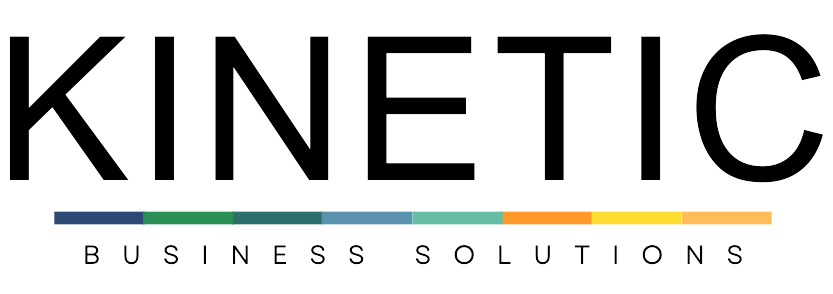This topic is so critical to any organisation that wants to get the best out of their new hires and ensure an engaged workforce that we have written two posts for you.
The topic? Onboarding talent.
Today’s workforce expects so much more from their employer, and it starts before they even join your organisations.
So, let’s explore the critical topic of onboarding.
Finding the right candidate for your technology or finance team is only the first stage in a successful hiring process. Once you’ve delivered the job offer, you need a plan to engage and empower your new employee from day one.
According to SHRM, 50% of people leave their new roles within the first four months. Additionally, up to half of all senior hires fail in the first 18 months too. The best way to address these challenges is to find a way to immerse each employee in the workings of your business. That’s where your onboarding plan comes in.
Onboarding helps new hires to understand the performance and social expectations of their new position. From teaching crucial skills to ensuring your people feel like a part of your company culture, proper onboarding leads the way to an invested and productive new hire.
The Benefits of an Onboarding and Induction Program
It’s an employee’s market in the finance industry. Nearly 33% of new hires start looking for a different role within their first six months on the job (the number is higher for millennials). Additionally, around 23% of hires turn over before finishing their first year.
Building a high-performing team is a time-consuming and expensive process. Onboarding is one of the best ways to make sure that you retain the talent you spent so long finding. Organisations with an onboarding process achieve up to 62% greater new employee productivity, along with 50% better new hire retention.
Onboarding eliminates the “sink or swim” approach to welcoming someone new into your business and replaces it with a strategic and welcoming plan of action. With the right campaign you can:
- Reduce the costs of turnover: The cost of employee turnover can range between 100% and 300% of a replaced employee’s salary.
- Improve company culture: Helping new staff members to build bonds leads to a more cohesive and positive company culture.
- Boosts productivity: It takes up to 8 months for new employees to reach full productivity, but an onboarding programme can speed things up by showing team members what they need to do to be successful.
- Improves employer brand: Sharing stories about your onboarding and induction process will show that you’re an employer who invests in their people.
- Attracts new talent: In a time when finance employees are looking for more than just a good salary from their jobs, an excellent onboarding plan can set you apart from the competition and improve your chance of finding great candidates.
What is an Onboarding Plan?
Employee onboarding is a crucial process of welcoming new employees onto your team. Some companies assume that this process only needs to last for a couple of days. However, to get the most out of a new staff member, it’s important to offer guidance and support consistently, managing their growth as they mature.
Beyond making a new team member feel welcome, onboarding systems also ensure that your people are equipped with the necessary skills and knowledge to integrate into your workforce. According to Tayla N. Bauer of the Portland State University, the average onboarding process requires a focus on four C’s:
- Compliance: The most fundamental aspect of onboarding, compliance refers to everything from essential company rules to legal procedures, dress codes, and government policies.
- Clarification: Even the most competent employees benefit from a breakdown of their job requirements. Clarification involves letting your people know exactly what’s expected of them, and how their performance will be measured.
- Culture: Everyone in your team needs to feel connected to the overarching company culture. This process involves introducing people to the norms of the workplace, work ethics, and leadership techniques.
- Connection: Networking is crucial for any new hire. Ensuring that your people can interact well together provides not only a more positive workforce but also a more productive and efficient environment.
What Does a Best Practice Onboarding Plan Need to Include?
The best onboarding processes begin as early as possible. For some companies, the plan will start from the moment an employee accepts an offer. For others, it’s possible to begin discussing onboarding details during the recruitment phase too.
Though each company has its unique issues and challenges to address during onboarding, the financial sector process will usually include some of the following tasks:
- Teaching Employees How Things Work: The first part of an onboarding process involves teaching your new people how your workplace functions on a day-to-day basis. This means letting them know where to park their car, where the bathrooms are, and where they need to go if they need support. You may also introduce your people to the unique language used in your environment, such as acronyms for roles or processes, or common terms their co-workers might use.
- Introducing Values and Norms: Onboarding is all about assimilating employees into a new environment. Throughout the onboarding process, hiring managers will need to engage their staff in formal conversations about the history of the organisation, the brand image you’re trying to build, and the values that are rewarded in the business. Mentors and peers can assist with this process by giving new people someone to emulate as they begin work in a new space.
- Defining Success: Job descriptions aren’t always clear when outlining what an employee needs to do to be truly successful in a role. Make sure your new team members understand how their performance will be measured in the months ahead, so they know what kind of outcomes they need to focus on. Address any accountabilities and boundaries that the individual may need to be aware of and provide them with resources that will assist them in delivering the results that you want.
- Welcoming New People into the Community: New employees are likely to feel isolated in your business at first. They’re outsiders coming from a completely different environment. Setting up opportunities for these individuals to bond with their new teams will make them feel more confident and supported in their roles. Additionally, by ensuring that your people don’t feel lonely at work, you can reduce the chances that they’ll leave for another job.
- Set up Early Wins: Finally, giving each employee a clear set of goals is a valuable part of the onboarding process, because it allows you to demonstrate clear expectations. Around 60% of companies say that they don’t use short-term goals with new hires. Assign tasks that you’d like your finance staff member to complete within the first 3, 6 or 9 months, then meet with them regularly to see how they’re progressing towards their targets.
During the First Week
Studies suggest that three-fourths of new hires consider training to be crucial in the first week of a new job. Though you hired your finance and technology talent because they had the right skills, it’s up to you to show them how they can use those skills to shine on the job.
During the first week:
- Schedule time for training: Don’t inundate your hires with too much information too fast. Provide training in manageable chunks and offer opportunities for shadowing too.
- Immerse them into the team: Make sure that the new hire is welcome at all team meetings and set up one-to-one sessions with their manager so that they can deliver frequent feedback.
- Assign small, useful starter tasks: Focus on getting your newcomer up-to-date with the ins and outs of their job through tasks that aren’t too challenging.
- Provide plenty of time for networking and interacting: Encourage your employee to go to the break room for lunch and take part in after-work activities so that they can begin to develop bonds.
By the end of the first week, your new hire will understand the basics of being a part of your team. They’ll feel clear about their role, and how they can interact with other team members, and they will be in the process of making some new friends.
During the first week, your new member of staff will also have an opportunity to find out where they fit within your current company culture, which means that they’ll feel less “out of place” in the coming weeks.
Then The First Month
The first month is a process of continuous improvement and development for new team members. Your people will be learning what it’s like to be a dynamic part of your team, and they’ll also start to come up with personal goals for what they’d like to achieve with your business in the future.
Set up small one-to-one interactions in the first month where you can discuss any questions your new employee might have and clarify any uncertainties. Don’t miss the opportunity to ask for your staff member’s feedback on the onboarding process so far too. This is a great time to find out whether they need any extra support in a specific area like getting to know new people or understanding the tools they’re expected to use.
It’s particularly useful to encourage your people to choose a mentor or “hero” employee that they’d like to turn to for guidance by the end of the first month.
A mentor at work can be a valuable tool when you’re getting started – particularly if you’re exploring a new role or sector. The Aberdeen group found that high-performing companies are 2 and a half times more likely to assign mentors or coaches to the onboarding process.
If your employee can’t find a mentor by themselves, consider assigning them one based on factors like shared ambitions. Once you find a mentor for your new arrival, encourage regular meetings between them, as well as shadowing sessions where the more recent employee can learn from the veteran.
How Kinetic Can Help
Kinetic specialise in sourcing professionals for leading organisations. If you need advice on how you can best implement these strategies and hire people who will help drive your business forward, contact us today.


